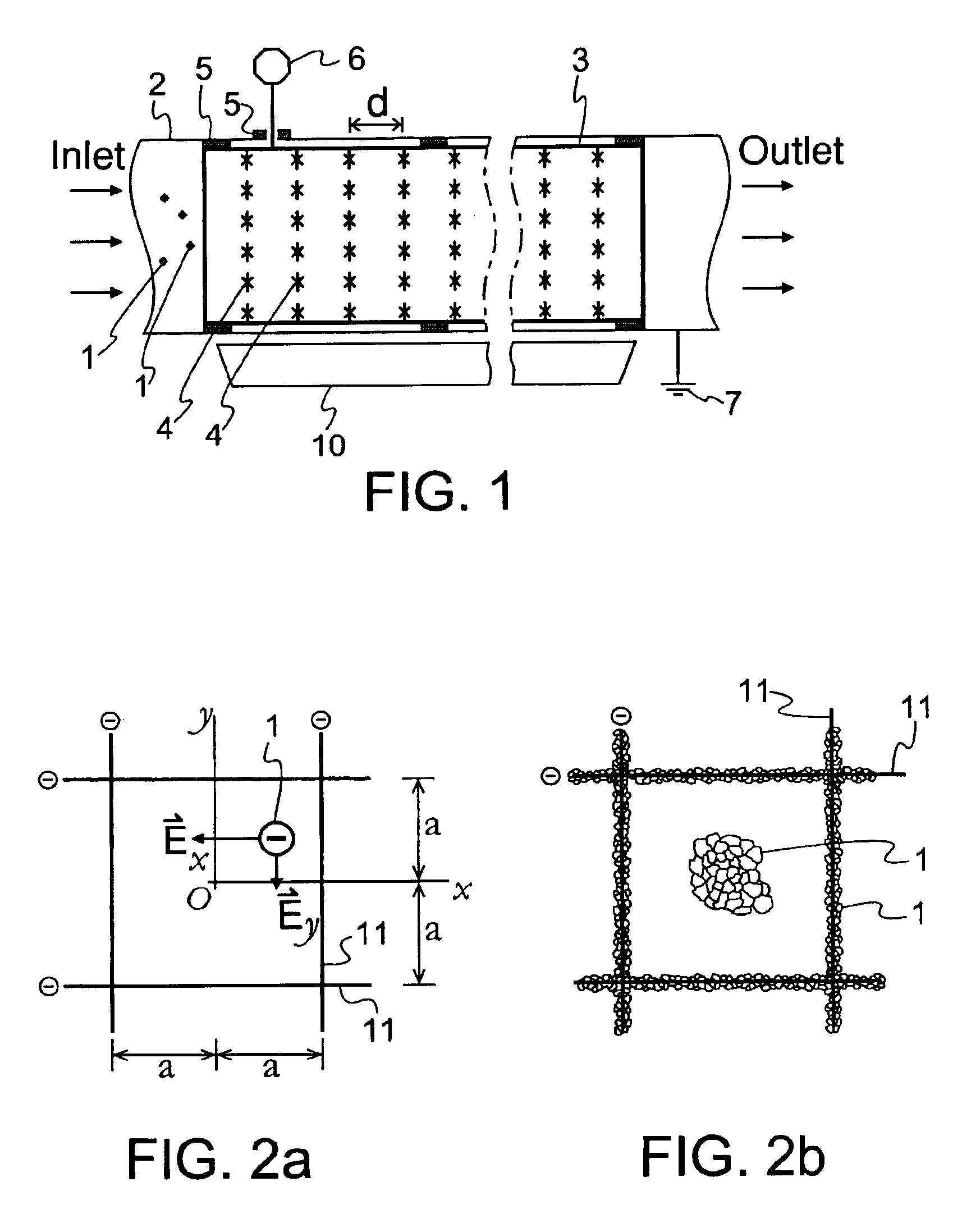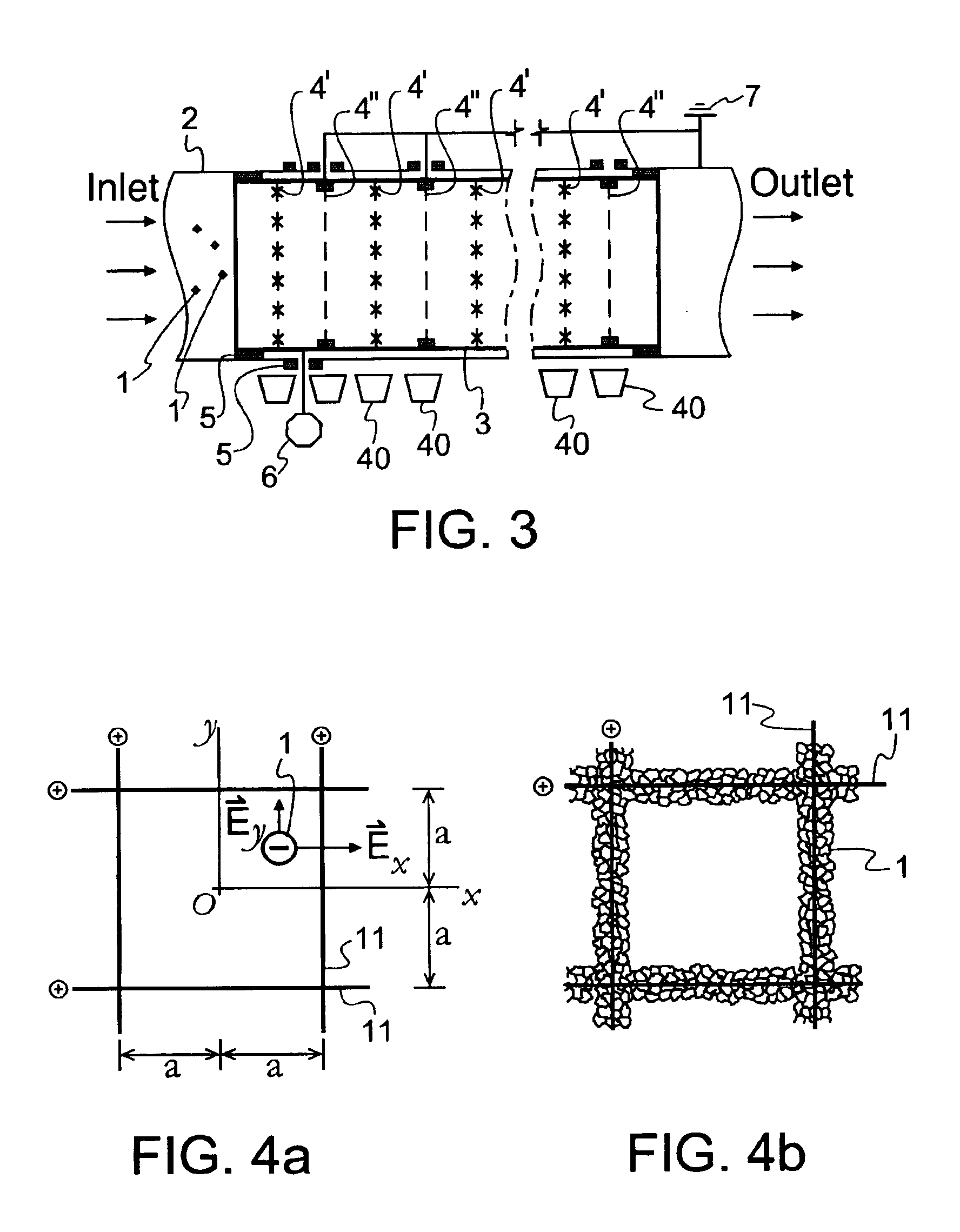Electrostatic sieving precipitator
a precipitator and electrostatic technology, applied in electrostatic separation, solid separation, chemical apparatus and processes, etc., can solve the problems of reducing the efficiency of precipitator collection, and inefficient capture of sub-micron particles by conventional esps, so as to promote agglomeration of fine particles, reduce precipitator size, capture easy
- Summary
- Abstract
- Description
- Claims
- Application Information
AI Technical Summary
Benefits of technology
Problems solved by technology
Method used
Image
Examples
Embodiment Construction
FIG. 1 shows the main section of the preferred precipitator that is especially suitable for concurrent and efficient collection of both large and fine particulate 1. The preferred precipitator is suitable for use in any environment in which particles are to be collected, agglomerated or both. The precipitator does not have to be preceded by a charging apparatus to charge or collect the particles, nor does it have to be followed downstream by any collection device. The precipitator of the present invention collects sufficient particulate that it can be used as a stand-alone unit. The precipitator has a plurality of closely packed planar conductive screens 4′, set apart at distance d which is preferably a few millimeters. The screens 4′ can be made from any conductive, non-corrosive and durable material, can have various opening shapes, and must be able to produce corona at sufficiently high voltages. Hence, smooth perforated plates and other similar smooth substrates cannot be used. ...
PUM
 Login to View More
Login to View More Abstract
Description
Claims
Application Information
 Login to View More
Login to View More - R&D
- Intellectual Property
- Life Sciences
- Materials
- Tech Scout
- Unparalleled Data Quality
- Higher Quality Content
- 60% Fewer Hallucinations
Browse by: Latest US Patents, China's latest patents, Technical Efficacy Thesaurus, Application Domain, Technology Topic, Popular Technical Reports.
© 2025 PatSnap. All rights reserved.Legal|Privacy policy|Modern Slavery Act Transparency Statement|Sitemap|About US| Contact US: help@patsnap.com



